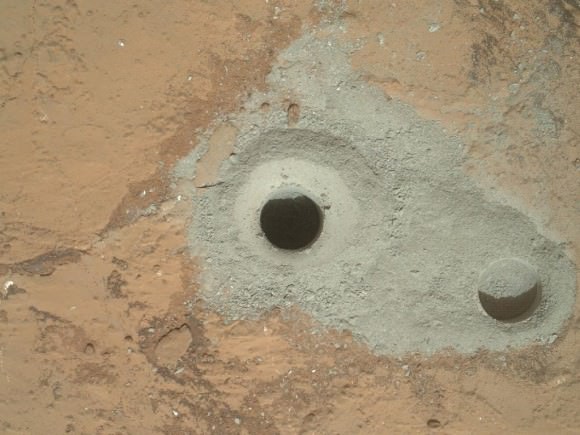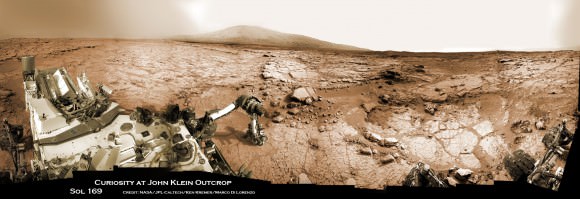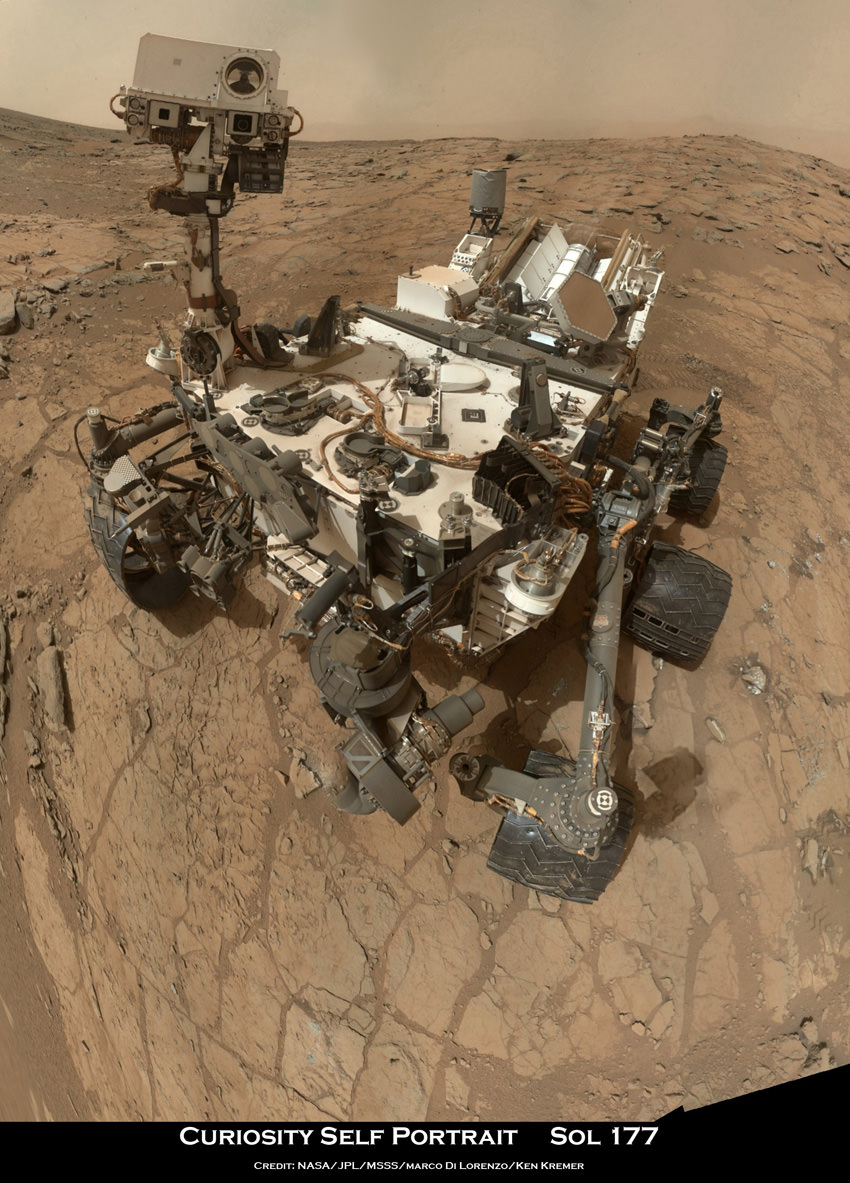Due to a fast approaching solar storm, NASA has temporarily shut down surface operations of the Curiosity Mars Science Lab (MSL) rover.
NASA took the precautionary measure because ‘a big coronal mass ejection’ was predicted to hit Mars over the next few days starting March 7, or Martian Sol 207 of the mission, researchers said.
The rover team wants to avoid a repeat of the computer memory glitch that afflicted Curiosity last week, and caused the rover to enter a protective ‘safe mode’.
“The rover was commanded to go to sleep,” says science team member Ken Herkenhoff of the US Geological Survey (USGS).
“Space weather can by nasty!”
This is the 2nd shutdown of the 1 ton robot in a week. Curiosity had just been returned to active status over the weekend.
A full resumption of science operations had been anticipated for next week, but is now on hold pending the outcome of effects from the solar storm explosions.
“We are making good progress in the recovery,” said Mars Science Laboratory Project Manager Richard Cook, of NASA’s Jet Propulsion Laboratory, prior to the new solar flare.
“Storm’s a-comin’! There’s a solar storm heading for Mars. I’m going back to sleep to weather it out,” tweeted Curiosity.
Solar flares cause intense bursts of radiation that can damage spacecraft and also harm space faring astronauts, and require the installation of radiation shielding and hardening on space based assets.
Since Mars lacks a magnetic field, the surface is virtually unprotected from constant bombardment by radiation.
NASA’s other spacecraft exploring Mars were unaffected by the solar eruptions – including the long lived Opportunity rover and the orbiters; Mars Odyssey & Mars Reconnaissance Orbiter.
Curiosity has been in the midst of analyzing the historic 1st samples of gray rocky powder ever cored from the interior of a Martian rock about a month ago.

 Curiosity accomplished Historic 1st drilling into Martian rock at John Klein outcrop on Feb 8, 2013 (Sol 182), shown in this context mosaic view of the Yellowknife Bay basin taken on Jan. 26 (Sol 169) where the robot is currently working. The robotic arm is pressing down on the surface at John Klein outcrop of veined hydrated minerals – dramatically back dropped with her ultimate destination; Mount Sharp. Credit: NASA/JPL-Caltech/Ken Kremer/Marco Di Lorenzo
Curiosity accomplished Historic 1st drilling into Martian rock at John Klein outcrop on Feb 8, 2013 (Sol 182), shown in this context mosaic view of the Yellowknife Bay basin taken on Jan. 26 (Sol 169) where the robot is currently working. The robotic arm is pressing down on the surface at John Klein outcrop of veined hydrated minerals – dramatically back dropped with her ultimate destination; Mount Sharp. Credit: NASA/JPL-Caltech/Ken Kremer/Marco Di Lorenzo
Eventually, the six-wheeled mega rover will set off on a nearly year long trek to her main destination – the sedimentary layers of the lower reaches of the 3 mile (5 km) high mountain named Mount Sharp – some 6 miles (10 km) away.
So far Curiosity has snapped over 48,000 images and traveled nearly 0.5 miles.
Curiosity’s goal is to assess whether the Gale Crater area on Mars ever offered a habitable zone conducive for Martian microbial life, past or present.


Radiation shielding from the Sun can actually be pretty simple done because it is directional. Unlike cosmic rays that comes from any direction except the ground.
All you need is some shielding object that is between the critical components and the Sun. It could be as simple as just rotating the satellite/rover that the most sensitive components are pointed as far away from the sun as possible Or hide behind a rock in the rovers case.